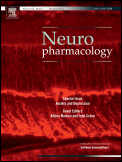
“Cannabinoids are derivatives of Cannabis sativa, the hemp plant, which evolved in the temperate regions of Central Asia. Cannabis was used as a medicine in ancient China (2700 BC) and India (1000 BC). Historically and anecdotally cannabinoids have been used as analgesic agents.
In recent years, there has been an escalating interest in developing cannabis-derived medications to treat severe pain. This review provides an overview of the history of cannabis use in medicine, cannabinoid signaling pathways, and current data from preclinical as well as clinical studies on using cannabinoids as potential analgesic agents. Clinical and experimental studies show that cannabis-derived compounds act as anti-emetic, appetite modulating and analgesic agents.
Since opioids are the only therapy for severe pain, analgesic ability of cannabinoids may provide a much-needed alternative to opioids. Moreover, cannabinoids act synergistically with opioids and act as opioid sparing agents, allowing lower doses and fewer side effects from chronic opioid therapy. Thus, rational use of cannabis based medications deserves serious consideration to alleviate the suffering of patients due to severe pain.” https://www.ncbi.nlm.nih.gov/pmc/articles/PMC3728280/



 “Extensive basic science research has identified the potential therapeutic benefits of active compounds extracted from the Cannabis sativa L. plant (the cannabinoids). It is recognized that a significant proportion of patients suffering with the debilitating symptoms of pain and spasticity in multiple sclerosis or other conditions smoke cannabis despite the legal implications and stigma associated with this controlled substance. GW Pharmaceuticals have developed Sativex (GW- 1000-02), a combined cannabinoid medicine that delivers and maintains therapeutic levels of two principal cannabinoids, delta-9-tetrahydrocannabinol (THC) and cannabidiol (CBD), via an oromucosal pump spray, that aims to minimize psychotropic side effects.”
“Extensive basic science research has identified the potential therapeutic benefits of active compounds extracted from the Cannabis sativa L. plant (the cannabinoids). It is recognized that a significant proportion of patients suffering with the debilitating symptoms of pain and spasticity in multiple sclerosis or other conditions smoke cannabis despite the legal implications and stigma associated with this controlled substance. GW Pharmaceuticals have developed Sativex (GW- 1000-02), a combined cannabinoid medicine that delivers and maintains therapeutic levels of two principal cannabinoids, delta-9-tetrahydrocannabinol (THC) and cannabidiol (CBD), via an oromucosal pump spray, that aims to minimize psychotropic side effects.” 



